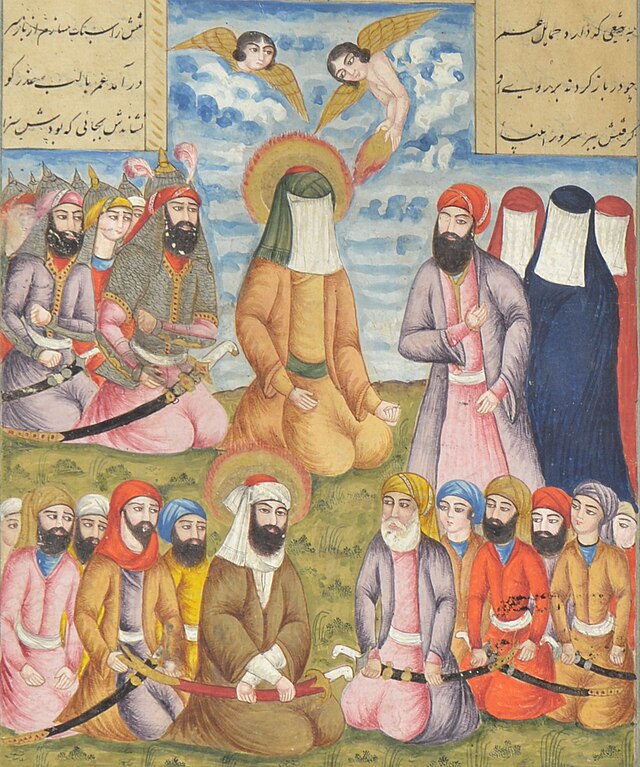
The conversion of Iranians to Islam is a complex historical process that unfolded over several centuries following the Arab conquest of Persia in the 7th century. This examination seeks to explore the factors influencing the conversion of Iranians, the extent to which coercion played a role, and how this transformation shaped Iranian identity.
Historical Context: The Islamic Conquest of Persia
The Islamic conquest of Persia began in 636 CE when Arab armies defeated the Sasanian Empire, marking a significant turning point in Iranian history. The initial military campaigns faced resistance from the Persian populace, but the eventual establishment of Muslim rule set the stage for a gradual process of conversion.
The early years of Islamic rule were characterized by political upheaval and cultural changes that would profoundly affect Iranian society.
The Process of Conversion
- Initial Resistance: Following the conquest, many Iranians initially resisted conversion to Islam, as Zoroastrianism was deeply rooted in their cultural and religious identity. However, over time, various factors contributed to a gradual acceptance of Islam.
- Economic and Social Incentives: Conversion to Islam offered several economic benefits. Muslims were often exempt from certain taxes imposed on non-Muslims (such as the jizya tax), which made conversion financially advantageous. Additionally, converting allowed individuals to access better opportunities within the new Islamic administrative structure.
- Political Dynamics: The political landscape also played a crucial role in conversion rates. As local elites and influential figures converted to Islam, their followers often felt compelled to do the same. This created an environment where conversion became associated with social mobility and political loyalty.
- Cultural Integration: The syncretic nature of Iranian culture allowed for a blending of Islamic practices with pre-Islamic traditions. Many Iranians adopted Islamic beliefs while retaining elements of their indigenous religions, making conversion less disruptive and more appealing.
- Were Africans Forced to Convert to Islam? A Historical Examination
- Were Turks Forced to Convert to Islam? A Historical Examination
Conflicting Narratives: Coercion vs. Voluntary Conversion
The narrative surrounding Iranian conversion to Islam is not uniform; it varies significantly across different regions and historical contexts:
- Voluntary Conversion: Many historians argue that most conversions occurred voluntarily due to economic and social incentives rather than through coercion. Richard Bulliet’s research indicates that while there was limited conversion during the Umayyad period (661-750 CE), a rapid increase in conversions occurred after the Abbasid revolution (750 CE), suggesting that many Iranians embraced Islam willingly as they recognized its benefits.
- Instances of Coercion: While voluntary conversion was predominant, there were instances where coercive measures were employed during military campaigns or periods of conflict. However, these instances were often localized and did not reflect a systematic policy of forced conversion across all Iranian communities.
- Cultural Resistance: In some areas, traditional beliefs remained resilient against Islamic influences. Even as Islam spread, many communities retained their indigenous practices or blended them with Islamic teachings, demonstrating a complex relationship between faiths rather than outright abandonment of one for another.
- Were Persians Forced to Convert to Islam? A Historical Examination
- Were Albanians Forced to Convert to Islam? A Historical Examination
The Role of Early Converts
The initial converts to Islam played a significant role in shaping the religious landscape in Iran:
- Influential Figures: Some early converts were members of the Persian elite who embraced Islam to preserve their privileges or gain entry into the new Muslim ruling class. These early adopters likely formed an influential core around which other converts coalesced.
- Military Influence: Many soldiers who fought in battles against Muslim forces also converted as a means of securing their positions within the new order or gaining access to land and resources.
Long-Term Implications
The long-term implications of this conversion process have been profound:
- Cultural Transformation: The spread of Islam greatly influenced Iranian culture, leading to significant developments in literature, philosophy, art, and science during the Islamic Golden Age. Persian culture adapted and integrated Islamic principles while preserving its unique identity.
- Religious Identity: Over time, Iran developed a distinct Islamic identity that incorporated elements of its pre-Islamic heritage. By the 16th century, under the Safavid dynasty, Shia Islam became the dominant sect in Iran, further solidifying a unique religious identity that persists today.
Conclusion
In conclusion, while there were instances where coercion played a role in specific contexts during the initial stages of Islamic expansion, the overall process of conversion among Iranians was largely characterized by voluntary acceptance driven by economic incentives, political advantages, and cultural exchanges. The gradual nature of this transformation reflects a complex interplay between adopting a new faith and maintaining cultural identity.
Understanding this historical context is crucial for appreciating contemporary Iranian society’s diverse religious landscape today.
As Iran continues to navigate its unique position within the global Muslim community, the legacy of its historical conversions remains relevant in discussions about national identity and cultural heritage.







